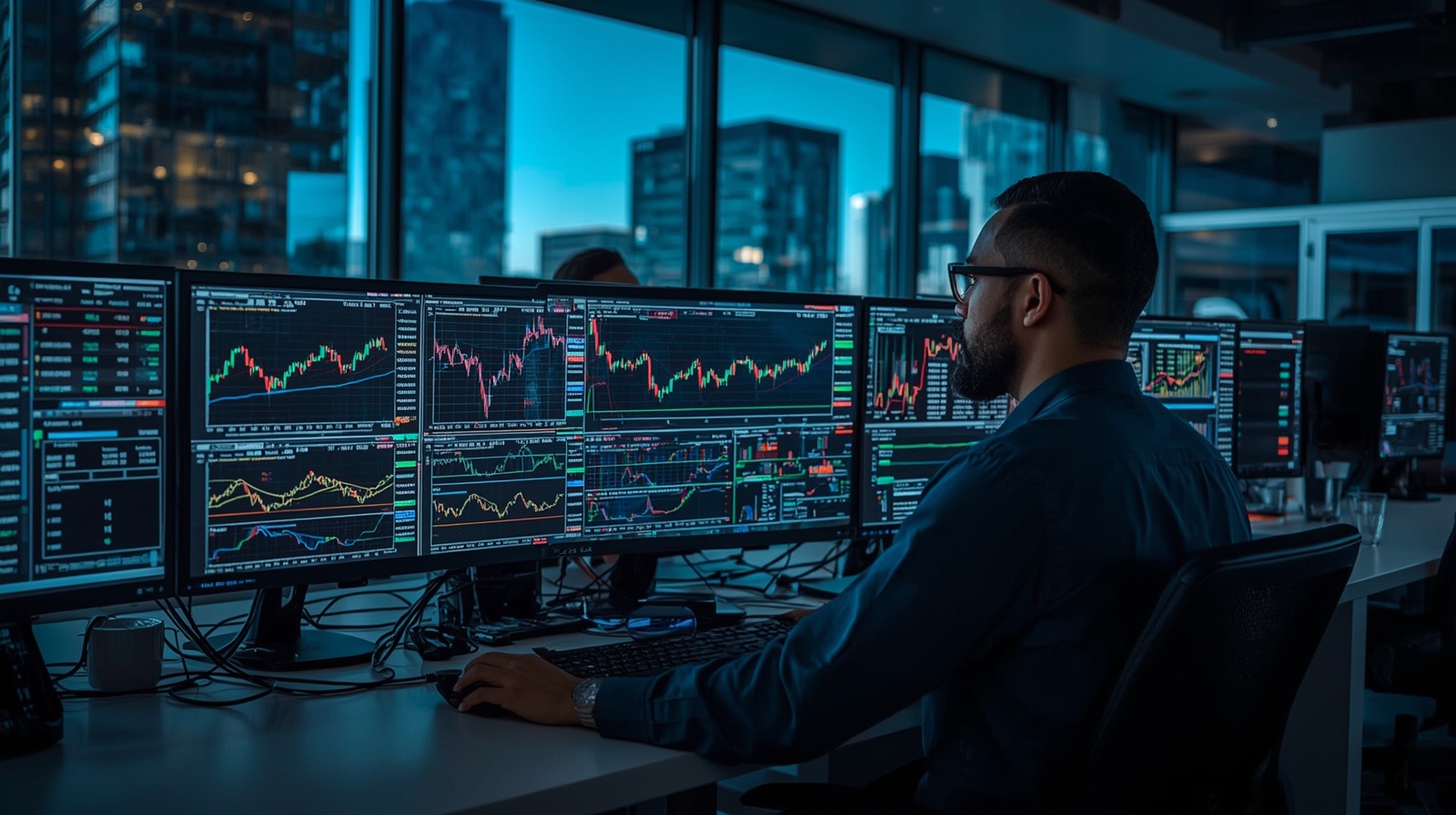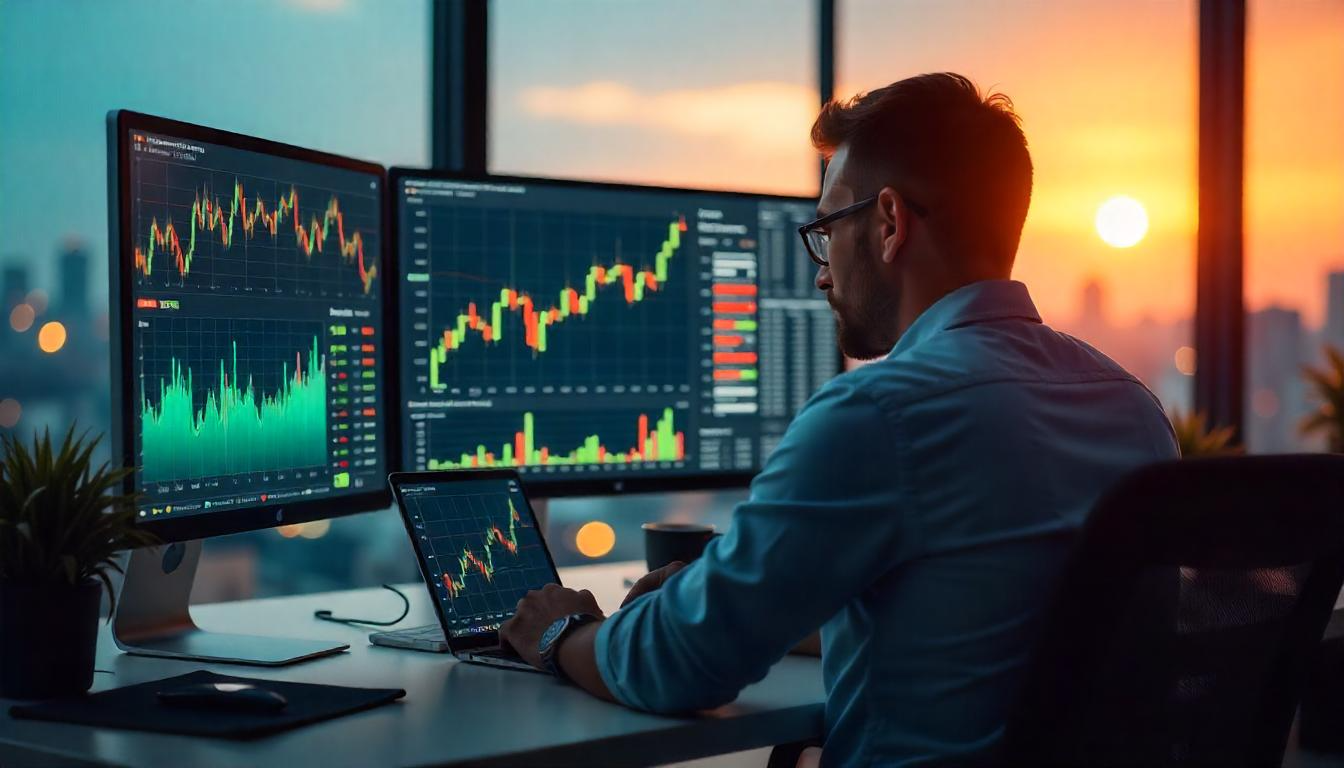Introduction to Trading and Financial Markets
Trading forms the cornerstone of the global economic system, enabling individuals and institutions to exchange financial assets with the goal of generating profits or managing risks. Trading, at its core, is the art and science of predicting price movements and exploiting fluctuations to achieve financial returns. From its simple beginnings in ancient barter markets to today's sophisticated digital platforms, trading has evolved into a complex and diverse activity encompassing various assets from stocks and currencies to commodities and cryptocurrencies.
Today's financial markets witness intensive activity around the clock, with trillions of dollars traded daily across various platforms and exchanges worldwide. This massive activity creates unlimited opportunities for traders of all levels, but at the same time requires deep understanding of the risks and challenges associated with this field.
Understanding Trading Fundamentals
Definition of Trading and Basic Principles
Trading, in its simplest definition, is the process of buying and selling financial assets with the goal of profiting from changes in their prices. This activity is based on a fundamental principle: the law of supply and demand, where prices move up and down based on various market forces.
The fundamental principles of trading include:
- Buy low, sell high: This is the basic goal of any trader
- Risk management: Protecting capital from significant losses
- Analysis and research: Understanding factors affecting asset prices
- Timing: Choosing appropriate times to enter and exit trades
- Psychological discipline: Controlling emotions and making logical decisions
The Difference Between Trading and Investing
Although both trading and investing aim to achieve financial returns, there are fundamental differences between them:
| Aspect | Trading | Investing |
|---|---|---|
| Time Frame | Short to medium term (minutes to months) | Long term (years to decades) |
| Frequency | Frequent transactions | Few, well-studied transactions |
| Analysis | Primarily technical analysis | Primarily fundamental analysis |
| Risk | High risk and quick returns | Controlled risk and stable returns |
Types of Financial Markets
Stock Market
The stock market is one of the oldest and most famous financial markets, where shares of companies listed on various exchanges around the world are traded. Stocks represent ownership stakes in companies, and their prices are affected by company performance, market conditions, and the general economy.
Characteristics of the stock market:
- Specific trading hours (usually during business days)
- Strict regulation by financial supervisory authorities
- High transparency in prices and information
- Good liquidity for large stocks
- Influence by economic and political events
Forex Market
The foreign exchange market (Forex) is the world's largest financial market by trading volume, with more than $6 trillion traded daily. This market operates 24 hours a day, 5 days a week, providing great flexibility for traders.
Advantages of the Forex market:
- High liquidity: Ability to execute trades quickly
- 24-hour trading: Continuous opportunities for trading
- Leverage: Ability to trade larger amounts with less capital
- Low costs: Tight price spreads
- Diversity: Many currency pairs to choose from
Commodity Markets
Commodity markets include trading in raw materials and basic products such as gold, silver, oil, natural gas, wheat, and coffee. These markets play an important role in the global economy and provide opportunities to hedge against inflation.
Cryptocurrency Markets
Cryptocurrencies emerged as a new and exciting asset class in the past decade, led by Bitcoin and Ethereum. These markets are characterized by high volatility and great growth potential, but they also carry elevated risks.
Basic Trading Strategies
Day Trading
Day trading is a strategy that involves opening and closing positions within the same trading day, aiming to benefit from short-term price movements. This strategy requires:
- Continuous market monitoring
- Speed in decision-making
- Strict risk management
- Sufficient capital to withstand volatility
Swing Trading
Swing trading focuses on taking advantage of medium-term price movements, which may last from several days to several weeks. This strategy suits traders who cannot monitor markets continuously.
"Swing trading combines the flexibility of short-term trading with the stability of medium-term investment, making it an ideal choice for many traders."
Scalping Strategy
Scalping is a very fast trading strategy aimed at achieving small profits from a large number of trades. Traders using this strategy may execute hundreds of trades in a single day.
Risk Management in Trading
Importance of Risk Management
Risk management is the most important element in successful trading, as the primary goal is not only to achieve profits, but also to preserve capital and avoid catastrophic losses. Even the best traders lose in some trades, but what distinguishes them is their ability to manage these losses.
Risk Management Tools
There are several tools and strategies for risk management:
- Stop Loss orders: Setting a price level to automatically close the trade when losing
- Take Profit orders: Setting a level to close the trade when achieving a certain profit
- Position sizing: Determining a percentage of capital to risk in each trade
- Diversification: Distributing investments across different assets and markets
- Hedging: Using financial instruments to reduce risks
The 1% Rule in Risk Management
The 1% rule states not to risk more than 1% of total capital in any single trade. This rule ensures that a trader can withstand a series of losses without bankrupting their account.
Technical and Fundamental Analysis
Technical Analysis
Technical analysis relies on studying charts and price patterns to predict future price movements. Traders use various tools such as:
- Moving averages: To determine the general trend
- Relative Strength Index (RSI): To measure overbought or oversold conditions
- Support and resistance lines: To identify important price levels
- Price patterns: Such as head and shoulders and triangles
Fundamental Analysis
Fundamental analysis focuses on studying economic and financial factors that affect asset values. In the stock market, this includes:
- Earnings and revenues
- Financial valuation ratios
- Management strength and product quality
- Competitive position in the market
- General economic conditions
Trading Platforms and Tools
Choosing the Right Trading Platform
Choosing the right trading platform is extremely important for trader success. Important factors in selection include:
- Security and regulation: Ensuring the platform is regulated by recognized financial authorities
- Ease of use: Intuitive and easy-to-navigate user interface
- Costs: Low spreads and commissions
- Analytical tools: Availability of technical analysis tools and charts
- Customer service: Available and responsive technical support
Advanced Analysis Tools
Professional traders use sophisticated analysis tools to improve their decisions:
- Specialized technical analysis software: Such as MetaTrader and TradingView
- Economic analysis tools: Economic calendars and performance indicators
- Automated trading systems: Robots and algorithms
- Advanced risk management tools: Position size calculators and diversification tools
Tips for Beginner Traders
The Right Start
For new traders, it's important to start the right way to avoid costly mistakes:
- Learn before you earn: Invest time in learning and training
- Start with a demo account: Practice without risking real money
- Create a clear trading plan: Set goals and strategies
- Start with small capital: Don't risk money you can't afford to lose
- Learn from mistakes: Document trades and analyze results
Common Mistakes and How to Avoid Them
New traders often fall into common mistakes that can be avoided:
| Mistake | How to Avoid |
|---|---|
| Trading based on emotions | Set clear rules and stick to them |
| Not using stop-loss orders | Set stop-loss level before opening the trade |
| Overtrading | Focus on quality, not quantity |
| Lack of clear plan | Develop a specific strategy and stick to it |
Psychological Aspects of Trading
Managing Emotions
Trading is not just a financial activity, but also a major psychological challenge. Emotions like fear and greed can negatively affect trading decisions. Successful traders learn how to manage these emotions and maintain calm under pressure.
Psychological Discipline
Psychological discipline includes:
- Sticking to the trading plan even if results are temporarily unsatisfactory
- Not allowing emotions to influence decisions
- Accepting losses as a natural part of trading
- Not chasing quick profits
- Patience and waiting for suitable opportunities
Recent Developments in Trading
Automated Trading and Algorithms
The trading world has witnessed a technological revolution with the emergence of automated trading and sophisticated algorithms. These technologies allow executing trades at super-fast speeds and analyzing huge amounts of data in seconds.
Artificial Intelligence in Trading
Artificial intelligence is used in:
- Analyzing complex patterns in data
- Predicting price movements
- Automatically managing risks
- Optimizing trading strategies
Mobile Trading
Traders can now access markets from anywhere in the world using mobile applications. This development has made trading more flexible and accessible to everyone.
The Future of Trading
Future Trends
The trading world is constantly evolving, and future trends include:
- More automation: Wider use of artificial intelligence and machine learning
- Cryptocurrency trading: Continued growth in this sector
- Social trading: Platforms allowing copying strategies of other traders
- Blockchain technology: Greater transparency and enhanced security
- Virtual reality: New interactive trading experiences
Future Challenges
With these developments, new challenges emerge:
- Need to keep up with technological development
- Increased competition from algorithms
- Necessity of continuous knowledge and skill updates
- Managing more complex risks
Conclusion and Recommendations
Trading in financial markets offers tremendous opportunities to achieve financial returns, but at the same time requires deep knowledge, strict discipline, and wise risk management. Success in trading is not guaranteed, but with continuous learning and proper practice, opportunities can be significantly improved.
For beginners, it's important to start with basic learning and practice on demo accounts before moving to trading with real money. As for experienced traders, they should continue developing their skills and keeping up with technological developments in this constantly changing field.
"Trading is a long journey that requires patience, perseverance, and continuous learning. The goal is not quick wealth, but building sustainable skills and strategies to achieve long-term success."
In the end, trading remains an activity that carries both risks and opportunities. The key is balancing the pursuit of profits with capital protection, while maintaining a realistic outlook and strategic patience in facing market volatilities.




